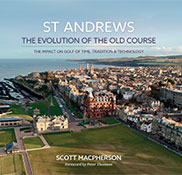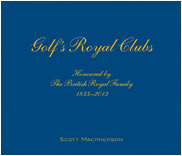GOLF CHAMPIONSHIPS ON SMGD COURSES:
At Close House – Colt Course. Sept 2017. A prestigious European Tour Championship hosted by Lee Westwood.
Broadcast worldwide from Royal Wellington Golf Club, NZ. October 2017. WOW!
The legacy continues.
Co-hosted at the award-winning Millbrook Resort near Queenstown, NZ. 2014 – 2023.
Encouraging Width
Renown golf architect Alister MacKenzie believed that good golf holes had many wide routes to destruction, but only one narrow route to salvation. The key to implementing such a design strategy is fairway width. So, what is the value of width in modern design, and why have architects strayed so far off-line?
Advocates of the strategic design principles agree with MacKenzie – ‘playing width’ is fundamental to good designs. Latitude gives the opportunity for incorporating degrees of punishment in correlation with the degree of the error. Equally it rewards well placed shots and provides alternative routes for golfers of all abilities and in all wind directions. Width allows golf to be played in shades of grey, the harshest of penalties replaced by half or quarter shot infringements and the opportunity for recovery ever present. No design is as uninspiring, repetitive and against the spirit of golf as the one plagued by straight, narrow and parallel holes, lined with thick rough.
Without exception, all the best par 4’s and 5’s in the world are dog-legs. Even those that appear straight, like the 14th on the Old Course in St Andrews, are best played as a dogleg for all classes of golfer. The subtle kinks and twists a dog-leg provides optimises ball placement and reward accuracy of length and line by gaining a level lie, avoiding a hazard or achieving a better angle into the green. The great virtue of good dog-legs however is that when done properly, the wayward power player can be beaten on these holes by the more controlled, shorter hitter.
Dog-legs have further benefits. Where courses which have mostly linear holes are required to be of great length to test the scratch golfers, courses comprised of clever dog-legs may be slightly shorter in actual length but play as long if not longer and, almost always, provide a superior challenge, experience and fun. Almost always, holes turn left or right are visually superior and suited better to maximising undulating terrain.
Greater width allows for greater design strategy, and provides greater opportunities to design alternative routes. With less forced carries, and less rough, the ‘wider’ golfing experience will be, critically if golf is going to continue to grow, more fun for the majority.
A major factor working against establishing desirable width comes from residential golf courses. As the primary source of funding for many new courses, the worst property developments put the creation of the maximum number of lots with ‘golf frontage’ ahead of the course design. Golf corridors are shrunk, squeezed and sandwiched until a course architect screams or the viability and safety of a new course is totally compromised. The solution for this scenario is in the hands of developers…and experienced architects. The formulation of a comprehensive master plan allows for both quality golf and residential design. Sadly it is true that some developers with views only to the short-term profit, care little for balance that ensures long-term appreciation in the value of both the course and property. These developments rarely reach their business potential.
A significant threat to the establishment and retention of playing width is cost. With club and ball technology already increasing the acreage required to build a golf course, many developers are less than enthusiastic about buying further land, even if they understand the strategic merits. As for maintenance costs, apart from extra land rates, having fairways of 40y-80y wide at landing areas may increase the maintained area by 50%. This has a significant impact on the maintenance budget of a course, as especially activities such as mowing, fertilisation and irrigation- possibly in the region of 20-30%.
When the temptation for most golf courses is to narrow fairways and line them with rough, trees or houses under the notion of making money, saving money, or the misconceived aim of making a course harder, the importance of width cannot be overstated. Greater width allows a course to be set-up to cater for all classes of golfers whilst encouraging strategic, mind engaging golf and removing the frustration’s that come from searching for lost balls. Greater width within a clever strategic design will challenge the best, and encourage all, and be the salvation of golf’s traditional spirit of fun and adventure.
AWARDS
 Winner
Winner
Excellence in Compliance Award
Royal Wellington Golf Club
 Scott awarded by GEO as a Sustainable Golf Champion
Scott awarded by GEO as a Sustainable Golf Champion
PUBLICATIONS
 St Andrews
St Andrews
The Evolution of the Old Course
by Scott Macpherson
TESTIMONIALS
"Scott is a very good course designer and it's interesting to go around a course and see what he sees. I have my own ideas about courses and the way they should look, but listening to somebody like Scott, who has a lot of experience, makes you appreciate how much more there is to take into account when you are designing one."
Lee Westwood, CH Magazine, 2014.



